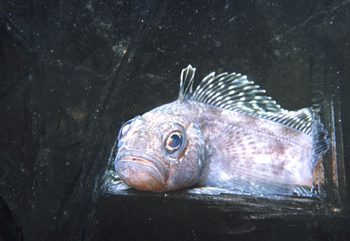The waters of Antarctica hover just above freezing, yet this does not stop fish from conquering the deep, cold regions.
 |
|
Resilient fish survive in the icy waters of Antarctica by secreting antifreeze in their pancreas (Source: LiveScience) |
The resilient fish have avoided freezing by producing a special “antifreeze protein” that prevents the fluids within them from crystallizing.
In a recent study, scientists revealed the survival secrets of this fish species.
Although the antifreeze protein (abbreviated as AFGP) was first documented 35 years ago, scientists still did not know how or where the fish produced this special molecule. For many years, they believed that the secretion of the protein occurred in the liver, partly because the liver is known as a prominent factory for producing blood proteins.
However, recent research analyzing the tissues of resilient fish found that the pancreas and stomach are the primary sources of this antifreeze production.
“It turns out the liver plays no role in preventing freezing in these fish species,” stated Christina Cheng, co-author of the study from the University of Illinois at Urbana-Champaign.
In the southern seas, the sea temperature rarely exceeds -1.94 degrees Celsius (the freezing point of water), but fish fluids solidify at around -1 degree Celsius. The water is frequently filled with tiny ice crystals—objects that fish swallow and which can freeze their digestive systems from the inside.
By secreting AFGP into their intestines, where this protein is then absorbed into the bloodstream, the fish prevent their bodily fluids from freezing.
The evolution of this ability, according to researchers, may have been driven by the need to prevent the blood in their bodies from turning into ice, but it also allows fish to survive in environments where many other species would not dare to swim.
T. An

















































